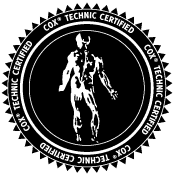Toronto Chiropractic Care Instead of an Emergency Room Visit and Pain Meds for Back Pain
Emergency room physicians are trying to figure out what is best to do for back pain patients who choose the ER for help. It’s a quandry for them, especially since nearly 3 million such patients with undifferentiated musculoskeletal low back pain choose the emergency room for help annually! (1) Unless there is cauda equina syndrome demanding surgery or an infection, pain is the issue. What can a Toronto ER do? How can an ER doctor provide higher value care? (2) Imaging and medication. What can the Toronto chiropractic back pain specialist offer? Spinal manipulation and nutrients. Chiropractic has published about successful management of back pain.
EMERGENCY ROOM: IMAGING
The ER performs plenty of imaging. One in 3 patients who go to the emergency room for back pain (compared to 1 in 4 who seek care from a primary care physician) gets imaging performed: simple imaging 26%, complex imaging 8.2%. (3) Today’s imaging guidelines don’t support this as they say to hold off on imaging for 4-6 weeks of conservative care before imaging. (4) Maybe patients are telling ER doctors that they have been under such care already? Probably not since only 34% of patients who go to an ER tell the emergency department physician that they use healthcare options like chiropractors, massage therapy, acupuncture and the like. (5) What about the pain?
EMERGENCY ROOM: MEDICATIONS
Pain relief, it seems, is what they can offer. Researchers have studied a variety of pain medication combinations ER doctors have prescribed to see what works best. What have they found? Stronger pain medication options don’t offer much of a difference. Adding baclofen, metaxalone, or tizanidine to ibuprofen doesn’t seem to improve function or pain any more than placebo plus ibuprofen within a week after an ED visit for acute low back pain. (6,7) Combining ibuprofen and acetaminophen did not reduce pain scores or the need for other analgesic pain meds compared with either ibuprofen or acetaminophen alone in emergency room patients with acute musculoskeletal injuries. (8) As a matter of fact, 48% of back pain patients who visit an emergency room for their back pain continued to experience functional impairment 3 months later as well as 42% said they had moderate or severe pain. 46% say they’ve used some type of analgesic pain reliever in the last day. There are short and long-term issues for ER patients with low back pain. (1) This may all be frustrating for ER docs and their patients but not typically for chiropractors and their chiropractic back pain patients. The Toronto chiropractic back pain specialist at Yorkville Chiropractic and Wellness Centre is armed with the best of chiropractic care for Toronto back pain relief.
CHIROPRACTIC: MANIPULATION AND NUTRIENTS
Your Toronto chiropractor understands. Familiarity with chiropractic spinal manipulation via The Cox® Technic System of Spinal Pain Management with the addition of nutrition like chondroitin sulfate, glucosamine sulfate and curcurmin and turmeric supports your Toronto chiropractor’s confidence that back pain relief and management for many otherwise frustrated Toronto back pain patients is possible.
Listen to this PODCAST with Dr. Michael Schneider on The Back Doctors Podcast with Dr. Michael Johnson who describes the role of the primary spine physician who would be the physician to seek out for back pain issues.
CONTACT Yorkville Chiropractic and Wellness Centre
Schedule a Toronto chiropractic appointment with Yorkville Chiropractic and Wellness Centre especially if an ER visit hasn’t produced the pain relief you wanted. Toronto chiropractic care has figured out a well-documented and researched way to manage back pain.


